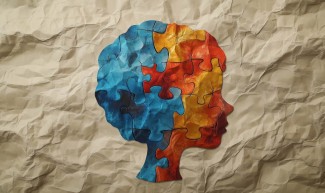A research team directed by Giovanni Stevanin and Alexis Brice from the Brain and Spine Institute, in collaboration with other teams of the international SPATAX network (coordinator, Alexandra Durr), have identified 3 new causative genes in hereditary spastic paraplegias, heterogeneous motor neuron disorders. These works have been published in the December 2012 and February 2013 issues of the American Journal of Human Genetics (Tesson et al, 2012; Martin et al, 2013).
The researchers have used the next generation sequencing technology coupled with whole genome linkage analysis to identify the mutations in 12 families. The 3 causative genes (DDHD1/SPG28, CYP2U1/SPG49, GBA2/SPG46) are encoding enzymes of the fatty acid and glucosylceramide metabolisms, which are critical lipids for various neuronal processes. In addition, the authors have evidenced alterations of the mitochondrial functions and structure in cells of patients mutated in DDHD1/SPG28 and CYP2U1/SPG49. The authors have also demonstrated the critical requirement of GBA2/SPG46 for proper development of zebrafish motoneurones.
These findings open the way to therapeutic trials and development of diagnostic tools since the 3 genes are expressed almost ubiquitously. Enzymatic activity of their protein products can then be measured in the periphery to monitor future pharmacological assays targeting these pathways. Therapeutic trials are indeed on the way in another form of spastic paraplegia involving lipid metabolism (SPG5/CYP7B1) in the Institute, by Fanny Mochel and Alexandra Durr in a European FP7 program (Neuromics).
Finally, the nosology of these diseases, far from becoming more complex through the identification of multiple new genes, is currently benefiting from deciphering the pathways involved since this will probably allow the identification of overlapping targets for therapy in these apparently heterogeneous neurological disorders.
Brain pictures (Scan and MRI) of individuals with Hereditary Spastic Paraplegia
Top line, from left to right : normal corpus callosum, white-matter abnormalities and calcifications of the globus pallidus.

Sources
Tesson C, Nawara M, Salih MAM, Rossignol R, Zaki M, Al Balwi M, Schule R, Mignot C, Obre E, Bouhouche A, Santorelli FM, Durand CM, Caballero-Oteyza A, El-Hachimi KH, Al Drees A, Bouslam N, Lamari F, El Malik SA, Kabiraj MM, Seidahmed MZ, Esteves T, Gaussen M, Monin ML, Gyapay G, Lechner D, Gonzalez M, Depienne C, Mochel F, Lavie J, Schols L, Lacombe D, Yahyaoui M, Al Abdulkareem I, Zuchner S, Yamashita A, Benomar A, Goizet C, Durr A, Gleeson JG, Darios F, Brice A, Stevanin G. 2012 Alteration of fatty acid-metabolizing enzymes affects mitochondrial functions in hereditary spastic paraplegia. Am J Hum Genet, 91: 1051-1064
http://www.cell.com/AJHG/retrieve/pii/S0002929712005794
Martin E, Schule R, Smets K, Rastetter A, Boukhris A, Loureiro JL, Gonzalez MA, Mundwiller E, Deconinck T, Marc Wessner M, Jornea L, Caballero Oteyza A, Durr A, Martin JJ, Schols L, Mhiri C, Lamari F, Züchner S, De Jonghe P, Kabashi E, Brice A, and Stevanin G. Loss of Function of Glucocerebrosidase GBA2 is Responsible for Motor Neuron Defects in Hereditary Spastic Paraplegia. Am J Hum Genet
http://www.cell.com/AJHG/retrieve/pii/S0002929712006349
Contact
Giovanni Stevanin,
Directeur de Recherche Inserm, Professeur EPHE.
Institut du Cerveau et de la Moelle épinière, CHU Pitié Salpêtrière, 75013 Paris
giovanni.stevanin@icm-institute.org







